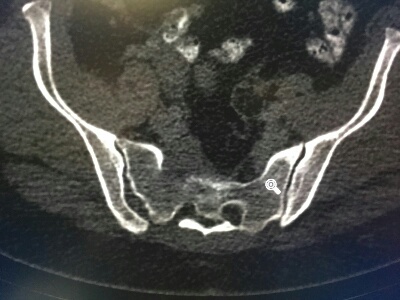RCA: a change in the pain

María is a 64 year-old woman. She works very hard at home, even with her daily back pain. She had a diagnosis of polineuropathy in relation to diabetes lasting for 20 years, causing pain in both legs. In the last year the pain has increased and is more intense on her right hip, it seems to be different, but her doctor associates the pain with her usual spine problems..
CLINICAL EVOLUTION: despite starting analgesic treatment the pain did not calm down. It focused more on the right hip and continued towards the back of both legs, although it was more intense in the right side. The patient was referred to a hospital where a CT scan was performed showing bone degenerative lesions. The pain did not calm and now focused on the right hip when walking. The patient went to a second hospital where a new reading of the CT scan revealed a lytic bone lesion on the right side of the pelvis.

ANALYSIS:
TYPE OF FAILURE: DIAGNOSTIC ERROR
COGNITIVE ASPECTS:
Clinician: The first doctor associates the worsening of pain with the diabetic polyneuropathy, but the characteristics of the pain were different. The new pain was more lateralized and intense. The doctor´s reasoning had some kind of representation bias while thinking in the same origin of the pain, and there was also a premature closure, because no other clinical possibilities were included in the list.
Radiologist: the initial radiologist had a perception problem and the consequence was a failure to appreciate the bone lesion. Some systemic factors are also implicated, such as the unusual location and the small size of the tumor.
LEARNING OBJECTIVES: Before a change in the usual symptomatology of a patient, the doctor must propose new diagnostic possibilities. In addition the radiologist must be methodical and with sufficient time and without distractions


